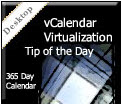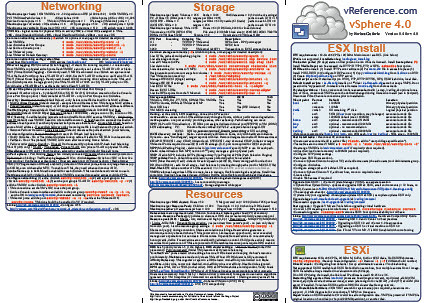Four new patches have been released for ESX 3.5.0. It appears ESXi, ESX4, and other versions of ESX are not impacted.
4 of the 8 patches are rated critical and should be evaluated quickly for application in your virtual infrastructure.
ID: ESX350-200908401-BG Impact: HostGeneral Release date: 2009-08-31 Products: esx 3.5.0 Updates forcedeth driver
The forcedeth driver installed on the ESX hosts causes the NVIDIA nForce Network Controller NICs to lose network connectivity until the forcedeth driver is reloaded. This patch addresses the issue.
The affected NICS are:
- NVIDIA nForce Professional 2200 MCP 1Gbe NIC
- NVIDIA nForce Professional 2050 I/O companion chip 1Gbe NIC
- NVIDIA nForce Professional 3600 1Gbe NIC
ID: ESX350-200908402-BG Impact: Critical Release date: 2009-08-31 Products: esx 3.5.0 Updates VMware Tools
After performing VMotion between ESX 3.0.x and ESX 3.5 hosts, virtual machines running on ESX 3.5 hosts are restarted in order to upgrade to the latest version of VMware Tools. After applying this fix, VMware Tools function as expected.
ID: ESX350-200908403-BG Impact: HostGeneral Release date: 2009-08-31 Products: esx 3.5.0 Updates megaraid and mptscsi drivers
This patch fixes the following issues:
- When the ESX host boots, the megaraid_sas driver heap gets depleted when claiming 4 LSI SAS RAID controllers on IBM System x3950 M2 Athena servers. This issue might cause the ESX host to stop booting. The fix increases the heap size for the megaraid_sas driver from 8 MB to 16 MB.
- The mptscsi_2xx driver limits the discovery of targets to 63 SAS devices per LSI Serial Attached SCSI (SAS) host bus adapter (HBA). This fix increases the number of targets to the value returned by the HBA firmware.
ID: ESX350-200908404-BG Impact: HostGeneral Release date: 2009-08-31 Products: esx 3.5.0 Updates vmkctl
When N-Port ID Virtualization (NPIV) enabled virtual machines are powered on on ESX hosts, a rescan issued from the VI Client results in an error message stating that the rescan failed, even if the rescan is successful.
ID: ESX350-200908405-BG Impact: Critical Release date: 2009-08-31 Products: esx 3.5.0 Updates vmkernel
Running the esxtop command on the service console of the ESX hosts lists high values for the max limited (%MLMTD) parameter for virtual machines when no max limited parameter is set. When the high values are listed, the performance of the virtual machines might be affected. In the VI Client, the max limited parameter is set in the Resources tab for CPU in Virtual Machine properties.
ID: ESX350-200908406-BG Impact: Critical Release date: 2009-08-31 Products: esx 3.5.0 Updates vmx
This patch provides the following:
- Adds support for new SCSI-3 status values in the SCSI emulation for virtual machines.
- Fixes an issue where powering on customized versions of Ubuntu virtual machines from the ESX hosts might cause the ESX hosts to stop responding.
ID: ESX350-200908407-BG Impact: HostGeneral Release date: 2009-08-31 Products: esx 3.5.0 Updates kernel source and vmnix
This patch updates the service console kernel for the following fixes:
- The forcedeth driver installed on the ESX hosts causes the NVIDIA nForce Network Controller NICs to lose network connectivity under certain circumstances. The affected NICS are:
- NVIDIA nForce Professional 2200 MCP 1Gbe NIC
- NVIDIA nForce Professional 2050 I/O companion chip 1Gbe NIC
- NVIDIA nForce Professional 3600 1Gbe NIC
- A bnx2x firmware dump issue.
- The mptscsi_2xx driver limits the discovery of targets to 63 SAS devices per LSI Serial Attached SCSI (SAS) host bus adapter (HBA). This fix increases the number of targets to the value returned by the HBA firmware.
ID: ESX350-200908408-BG Impact: Critical Release date: 2009-08-31 Products: esx 3.5.0 Updates bnx2x driver
This patch fixes a bnx2x firmware dump issue.



















